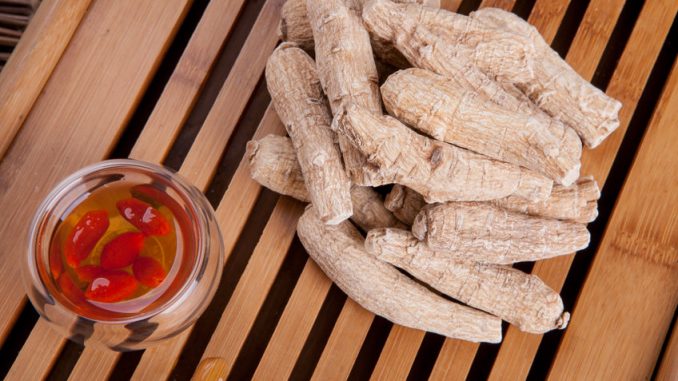
Gastrodia elata (G. elata Blume) is a perennial herb plant and belongs to the Gastrodia genus which is in the Orchidaceae family. The tubers are used as a food spice and medicinal ingredient (Chen et al., 2014; Li et al., 2019).
The plant has been cultivated on a large scale in China since the 1970s where it grows as a saprophyte. It is known as Tainma. It is sourced too from countries such as Japan, India, Nepal and Bhutan. It grows in a symbiotic relationship with a honey fungus Armillaria mellea found on rotting wood.
As a medical plant it is used to treat liver conditions, headaches, tetanus and epilepsy. The functional components are gastrodin, vanillyl alcohol, 4-hydroxybenzaldehyde and gastrodigenin. There are also a number of unusual gastrodia polysaccharides with possible therapeutic benefits.
Gastrodin is a 4-hydroxyphenyl-B-D-glucopyranoside which has been confirmed to have the health benefits of sedation, hypnosis, lowering blood pressure and anti-convulsion effects (Chen et al., 2019).
In China, Gastrodia elata is combined with Chuanxiong (Ligusticum chuanxiong Hort) to produce a mix called Tianshu which is used to treat hypertension.
References
Chen, Y. Y., Bao, Z. X., Qu, Y., & Li, Z. Z. (2014). Genetic variation in cultivated populations of Gastrodia elata, a medicinal plant from central China analyzed by microsatellites. Genetic Resources and Crop Evolution, 61(8), pp. 1523-1532 (Article).
Chen, C., Guo, C., Gao, J., Shi, K., Cheng, J., Zhang, J., … & Liu, A. (2019). Vasorelaxant and antihypertensive effects of Tianshu Capsule on rats: an in vitro and in vivo approach. Biomedicine & Pharmacotherapy, 111, pp. 188-197. (Article)
Li, Y., Zhang, Y., Zhang, Z., Hu, Y., Cui, X., & Xiong, Y. (2019). Quality evaluation of Gastrodia elata tubers based on HPLC fingerprint analyses and quantitative analysis of multi-components by single marker. Molecules, 24(8), pp. 1521 (Article).
Leave a Reply